The project
Did you have a favourite butterfly in childhood? I had. It was tiny, powder-blue with a white seam at the tip of its wings. I clearly remember it fluttering above wildflowers on a summer’s meadow, and the jolt of joy I felt whenever I saw it. Now it is no more.
Somehow, I feel personally robbed, ever since I learned of its possible extinction. What else, I wondered. What have we lost, in this short timespan since I came to be. This project is an exploration of that theme.
I hope to add to this regularly. Sometimes the artwork will be minimal, sometimes not, and that will mostly be due to time constraints. This project is quite research heavy, since I also try to bring you some information about the animals. As for the years, I pick either the year in which the species was last seen or the year in which it was declared extinct. I have learned that some species have been declared extinct multiple times, only to resurface. Although I try to cross-reference the data, I might have missed some "resurrections". If that’s the case, and you know it, it’s one of the happiest mistakes I could make. Please do point it out.
Species lost in my lifetime I: 1987 to 1990
The lonely song of the Kauaʻi ʻōʻō

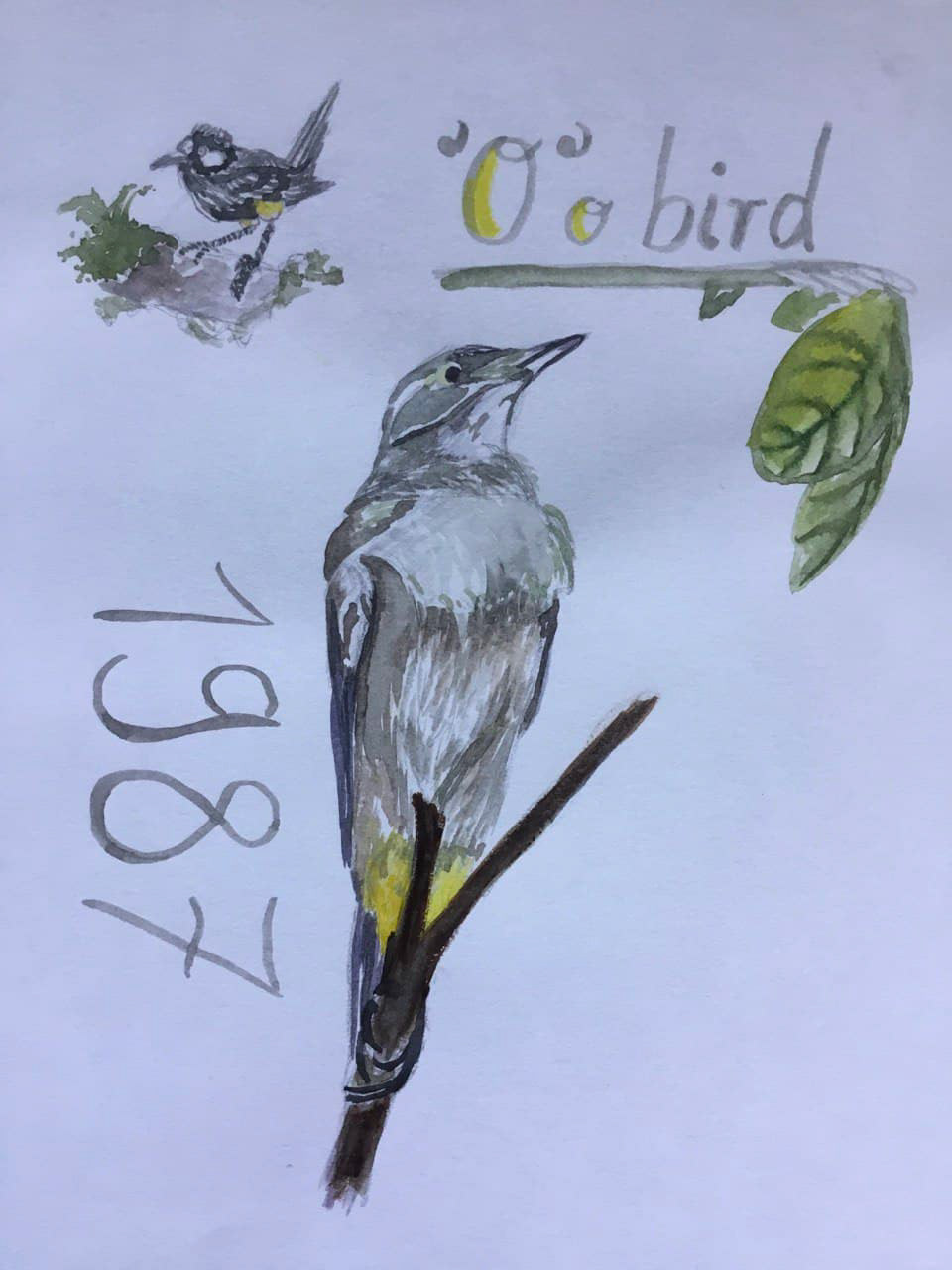
The name ‘O’o is an imitation of the bird’s call. While sketching I listened to a one-hour loop of the last recording ever of its voice. A mating call of a male, to a female that would never come. You can check it out on YouTube if you like, it's beautiful in its own right. Hearing the sound of a species no longer with us was heartbreaking.
Original habitat: islands of Hawai'i
Reason for extinction: mosquito-transmitted diseases, which made the birds retreat to higher ground with fewer nesting opportunities, and two hurricanes within 10 years destroying the old trees with cavities needed for nests
Artwork: Pencil and watercolor, picture of reference for the bird on the right was a photograph from a dead specimen
Dusky seaside sparrow
Original habitat: Merrit Island and St. Johns River, Florida, USA
Reason for extinction: loss of nesting grounds when Merrit Island was flooded to reduce mosquito population around Kennedy Space Center, loss of habitat due to the draining of marshes, pollution, pesticides and discontinuing of breeding programm after only hybrids remained
Artwork: Digital watercolor and ink, Fresco texture brushes, picture of reference from Wikipedia
Cuban ivory-billed woodpecker
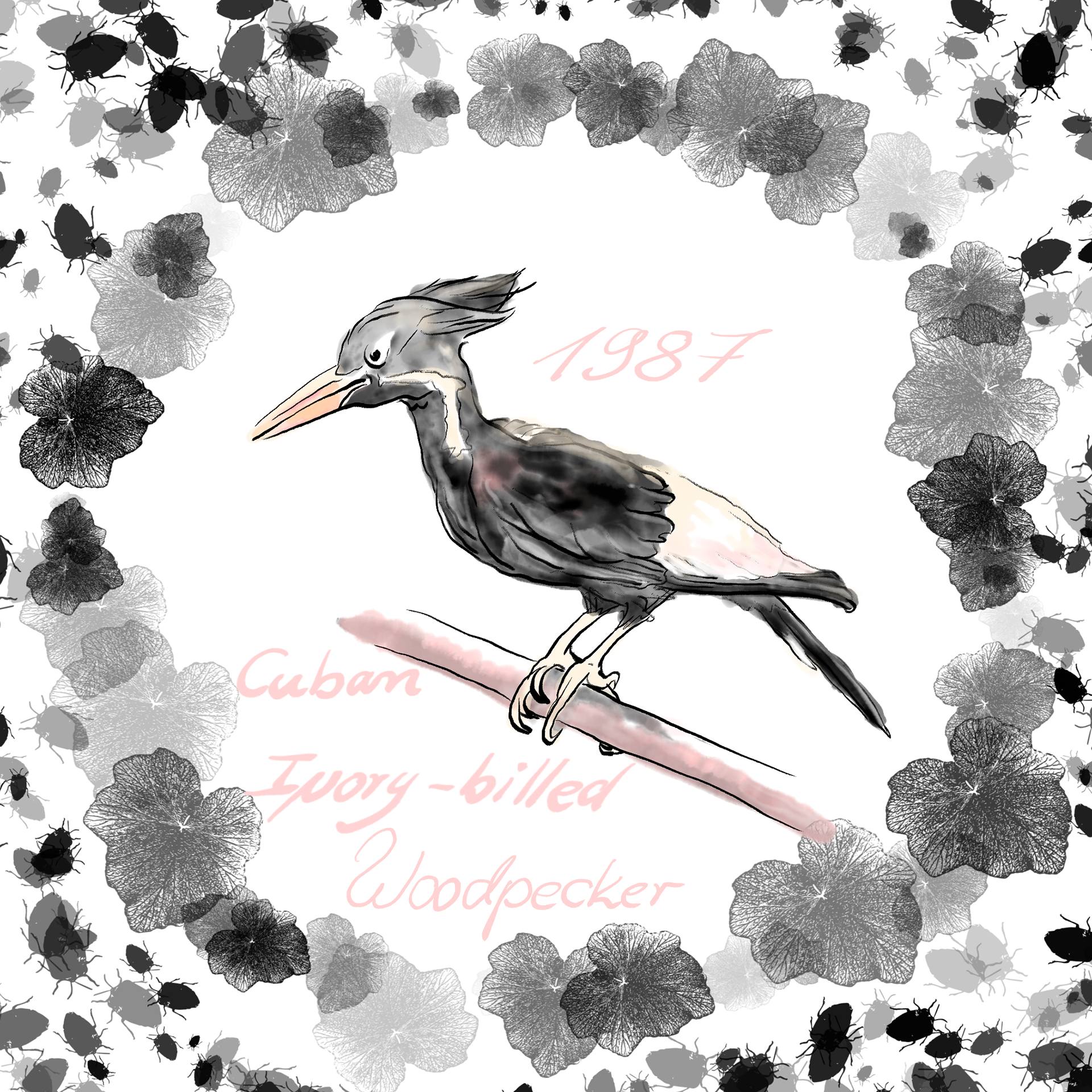
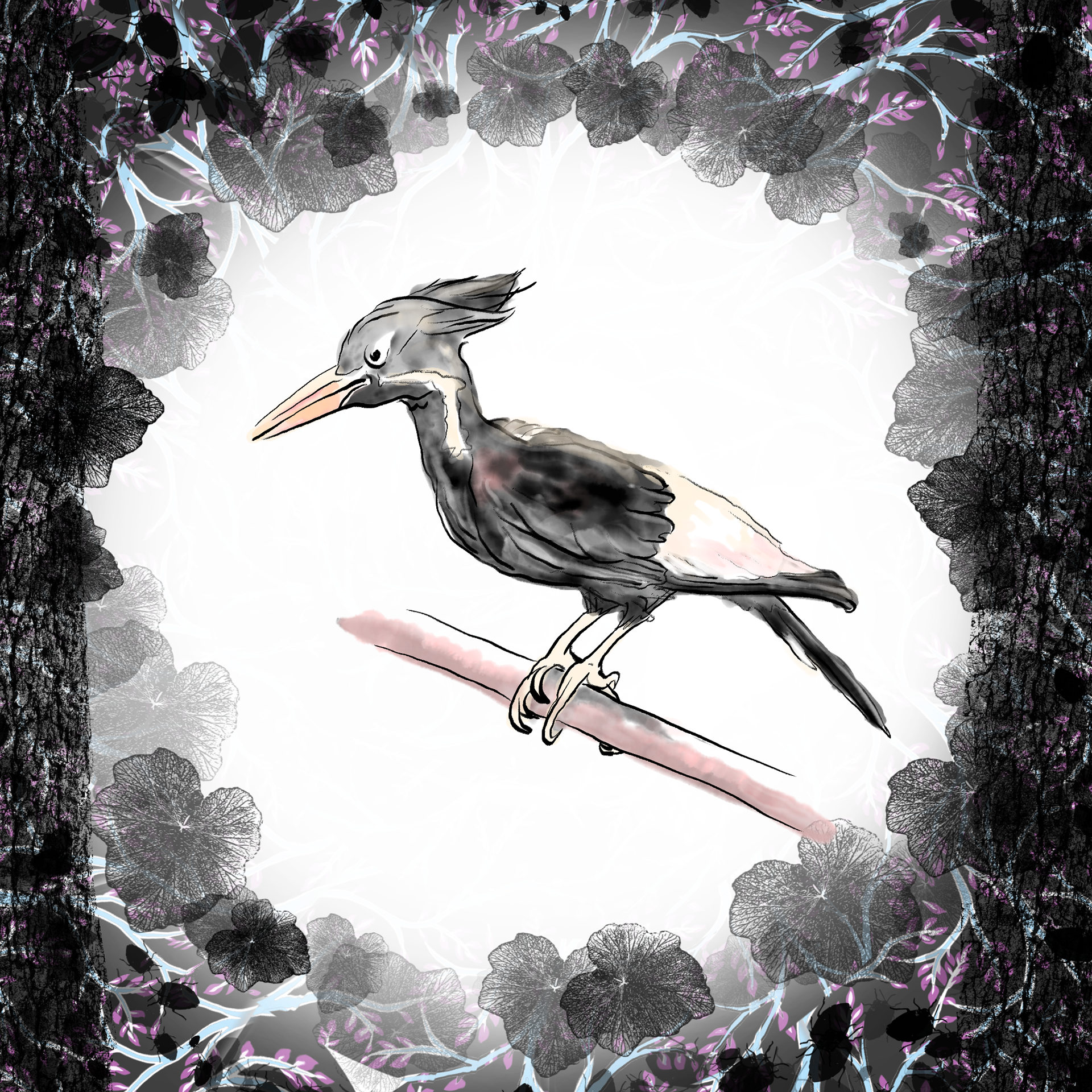
Original habitat: old-growth forests with plenty of dead trees in Cuba
Reason for extinction: Hunting (by hunters, but also for museum collections) and loss of habitat by logging
Artwork: Digital ink and watercolor in Adobe Fresco, pattern brushes created in Adobe Capture and Adobe Illustrator for the frame, picture of reference taken from a turn-around video of a dead female specimen on Wikipedia
Kouprey, the forest ox
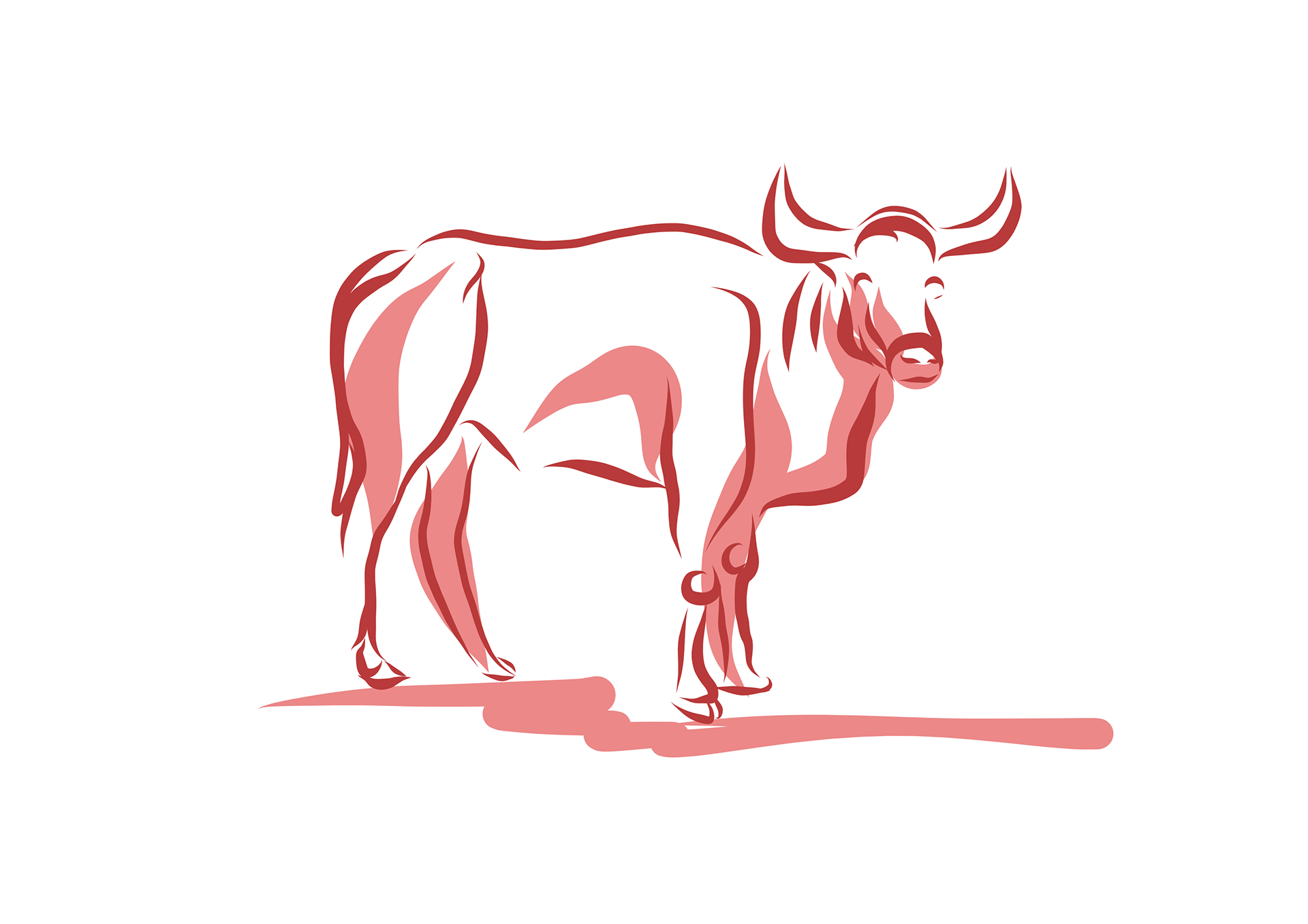
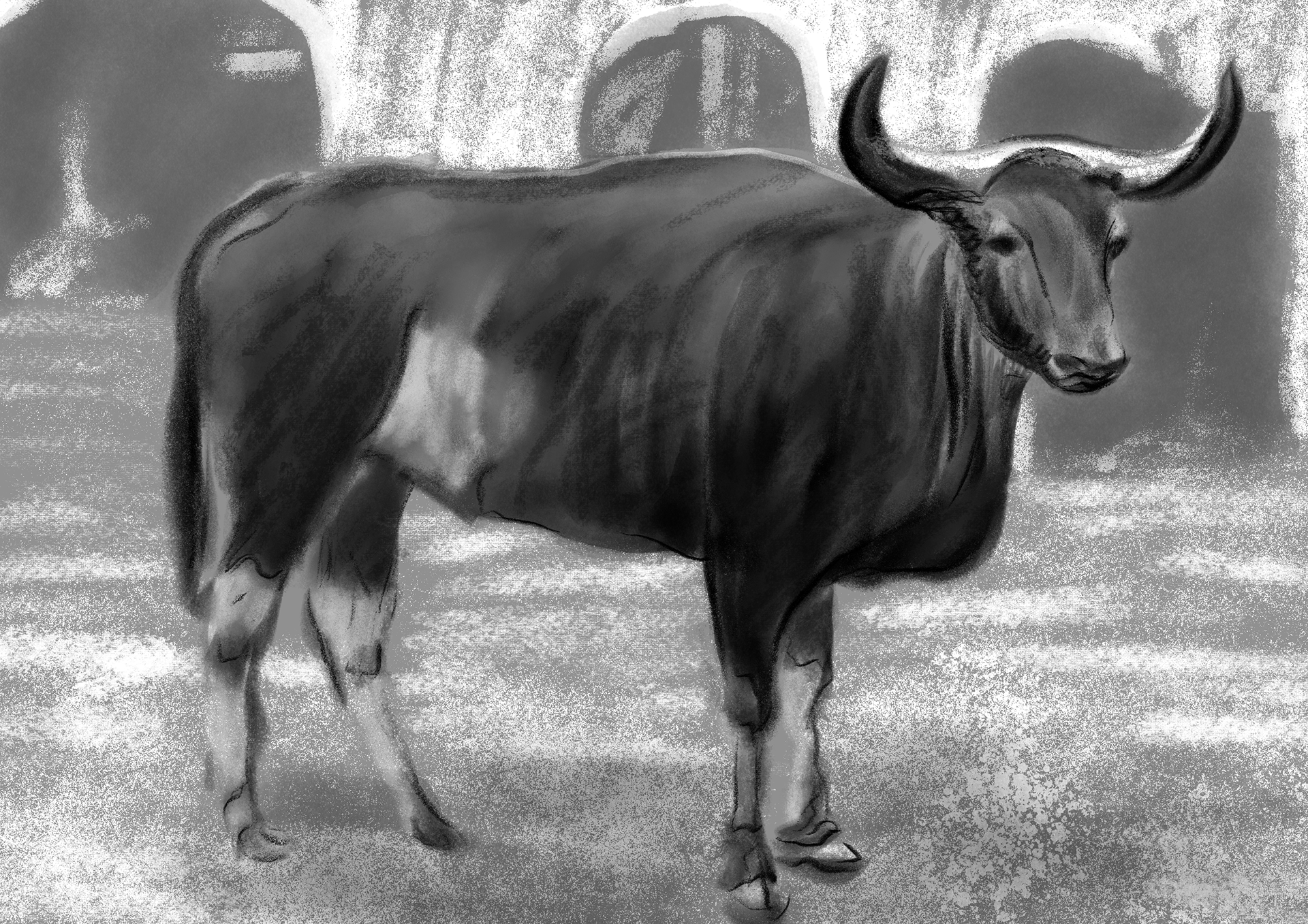

Original habitat: low, hilly grassland partially covered in forests in Southeast Asia, including Cambodia, parts of Laos and Vietnam, with a small chance that a population remains in Cambodia
Reason for extinction: uncontrolled hunting for meat, horns and skulls (used in traditional Chinese medicine), loss of habitat due to agriculture and logging, cross-infections from cattle farming
Note: There have been no verified sightings since 1970 or 1983, and various attempts to find Kouprey herds have failed. Nevertheless, in 1988 an international workshop aimed at creating an conservation action plan. I have chosen the year 1988 to represent the Kouprey on this hopeful note.
Artwork: Vector brushes in Adobe Fresco for the first image, Digital charcoal, pencils and pastels in Adobe Fresco for the second, reference picture taken from Wikipedia
ʻŌʻū
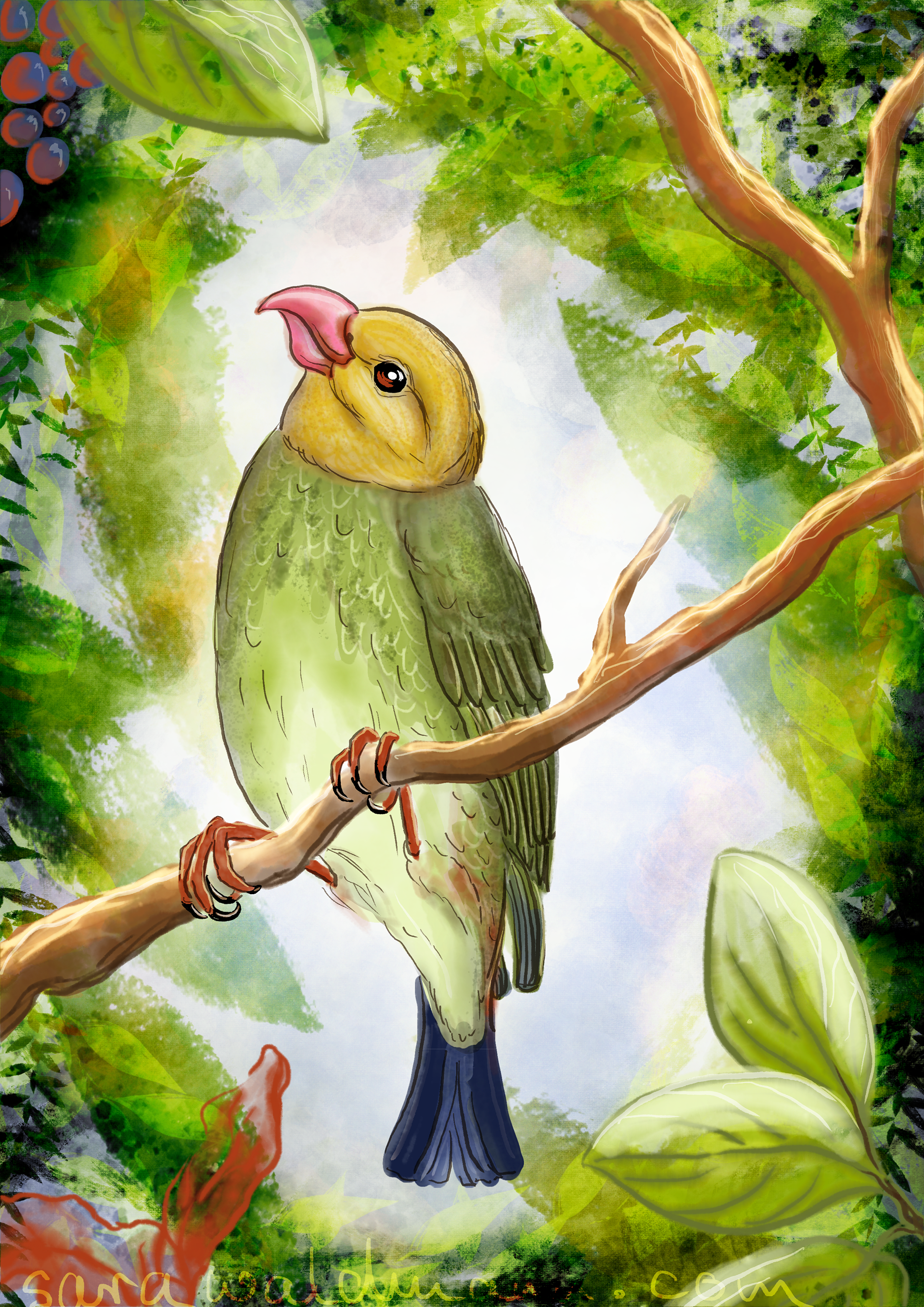

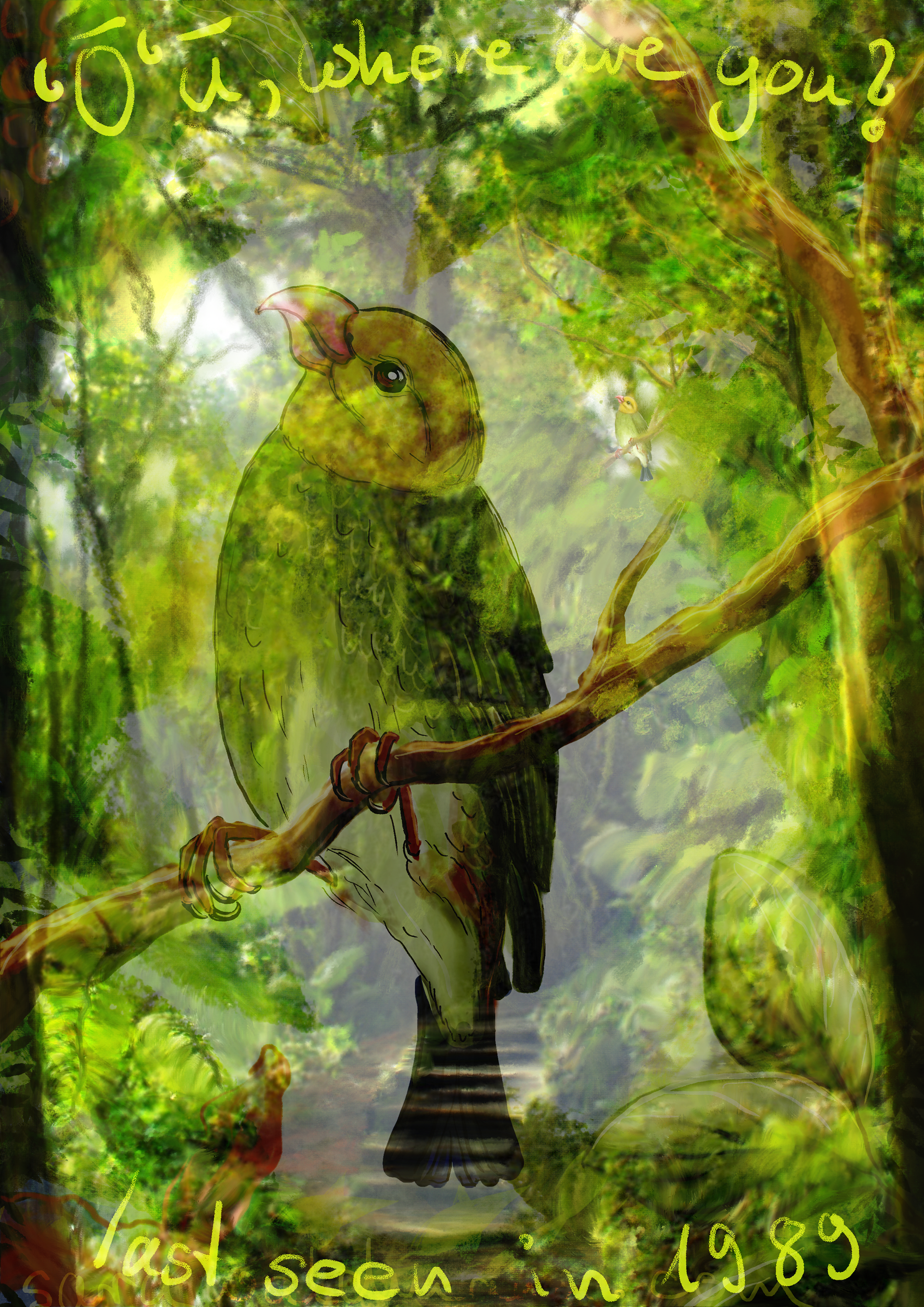
Original habitat: Hawaiian islands, originally widespread throughout the island group
Reason for extinction: mosquitoe-transmitted avian malaria, fowlpox, loss of habitat and introduced predators, one of the largest populations were driven away from their habitat when lava from Mauna Loa flowed through the area
Note: During my research I noticed how a lot of species lost in the modern age seemed to originate from the Hawaiian islands, most of them birds. This could be for any number of reasons, and I could of course be mistaken. Some experts working on Hawaiian species might have edited a lot of Wikipedia articles, thus skewing my perception. But it could also be that these animals have been under more pressure, as they are endemic to a remote part of the world where they can find no sanctuary, should conditions become unfavourable.
Artwork: Digital ink and watercolor in Adobe Fresco, smudge art brushes, background photograph of rainforest taken by me in 2016 (in Costa Rica, so actually not the correct environment)
Golden Toad
Original habitat: tropical cloud forests in Costa Rica
Reason for extinction: reasons for the rapid decline at the end of the 80s are unclear, attributed in turn to fungal infection or adverse climate changes (this species relied on very specific breeding conditions during spring time, needing ponds and puddles)
Artwork: Vector drawing in Adobe Fresco, with textures done with Adobe Capture, picture of reference taken from a web article
Oʻahu tree snail, Achatinella abbreviata
Original habitat: tropical forest trees of the Hawai'ian island O'ahu
Reason for extinction: excessive shell collection, rats and carnivorous snails are thought to have contributed
Note: There have been some more recent but unconfirmed sightings.
Artwork: digital watercolor and ink in Adobe Fresco
Imperial Woodpecker
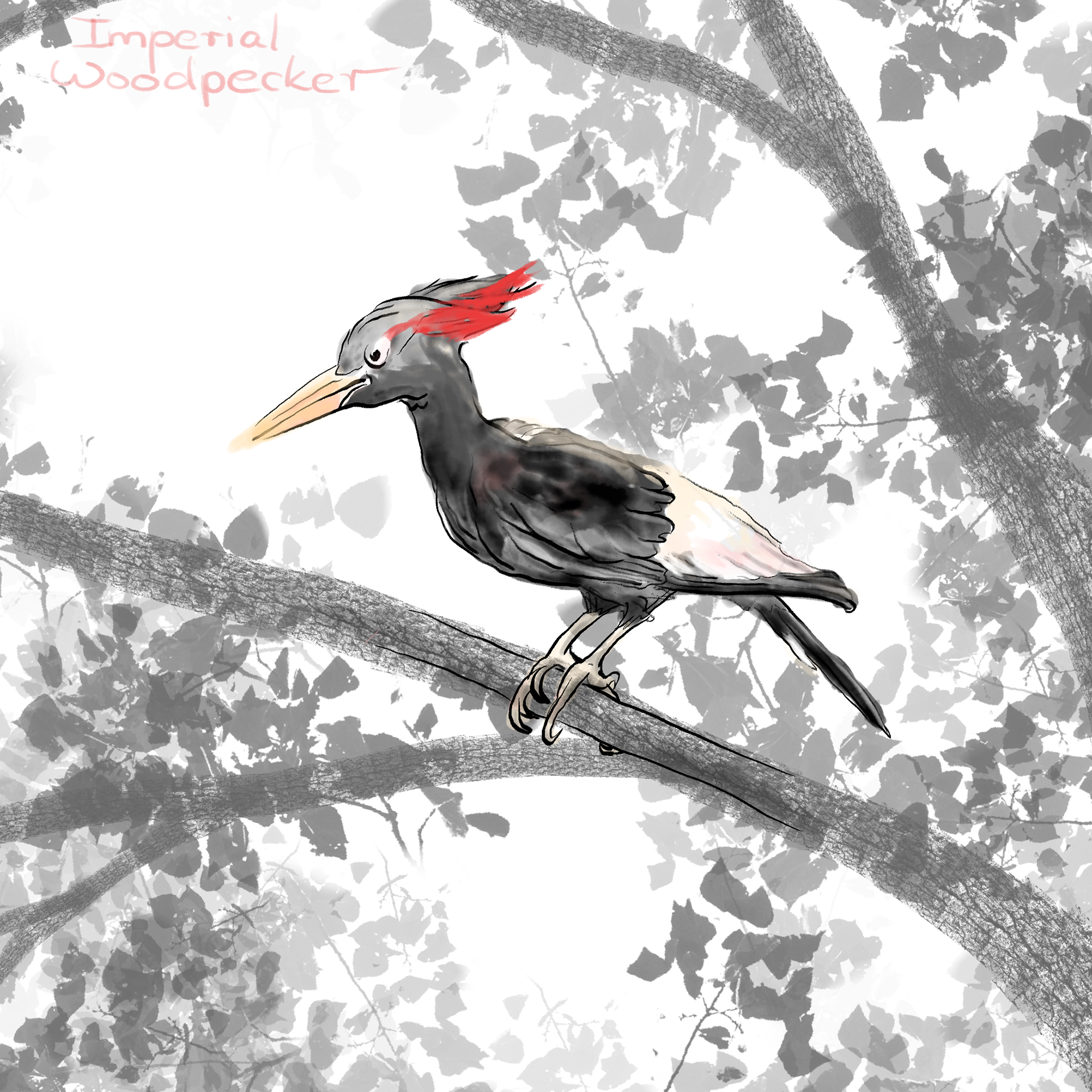
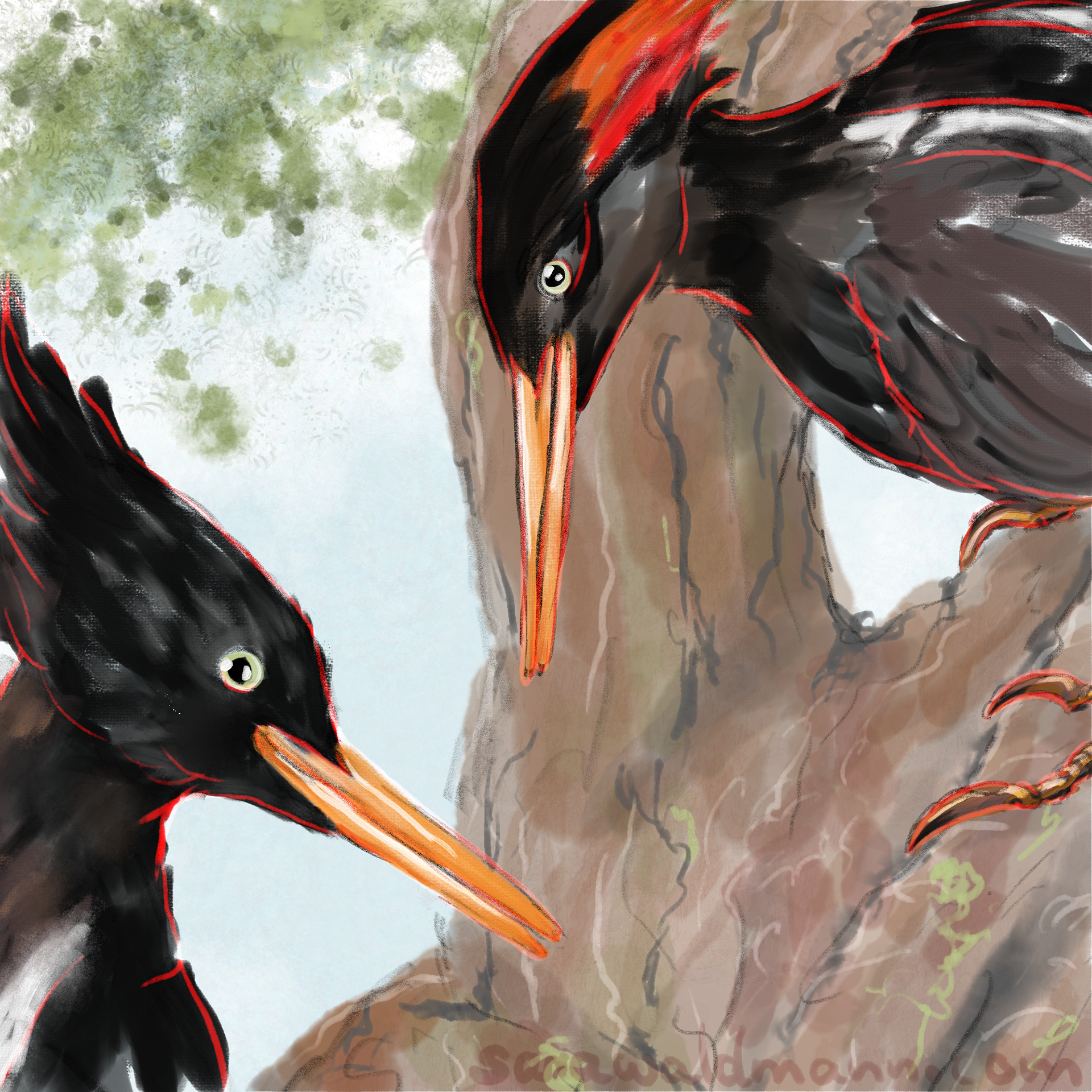
Original habitat: open mountain forests in Mexico
Reason for extinction: habitat destruction and habitat fragmentation, hunting (for sport, collection and curiosity, ritual purposes, nestlings were considered a delicacy by local native tribes)
campaign of poisoning: Mexican logging companies had apparently started education programmes which told locals the bird destroyed timber and that they should smear poison on tree trunks (these birds do not actually damage healthy, living trees).
Note: some evidence exists that the species survived into the 90s, but no confirmed sightings since 1956 - if still extant, it would be the world's largest woodpecker at around 60cm
Artwork: digital watercolor and ink in Adobe Fresco for the first picture, which is an edited version of the Cuban ivory-billed woodpecker (see year 1987); digitial watercolor, oil and pattern brushes for the picture of a pair (the males had a red crest)
Thank you for your time! Let us celebrate what precious wildlife we have left, and try to keep it safe.